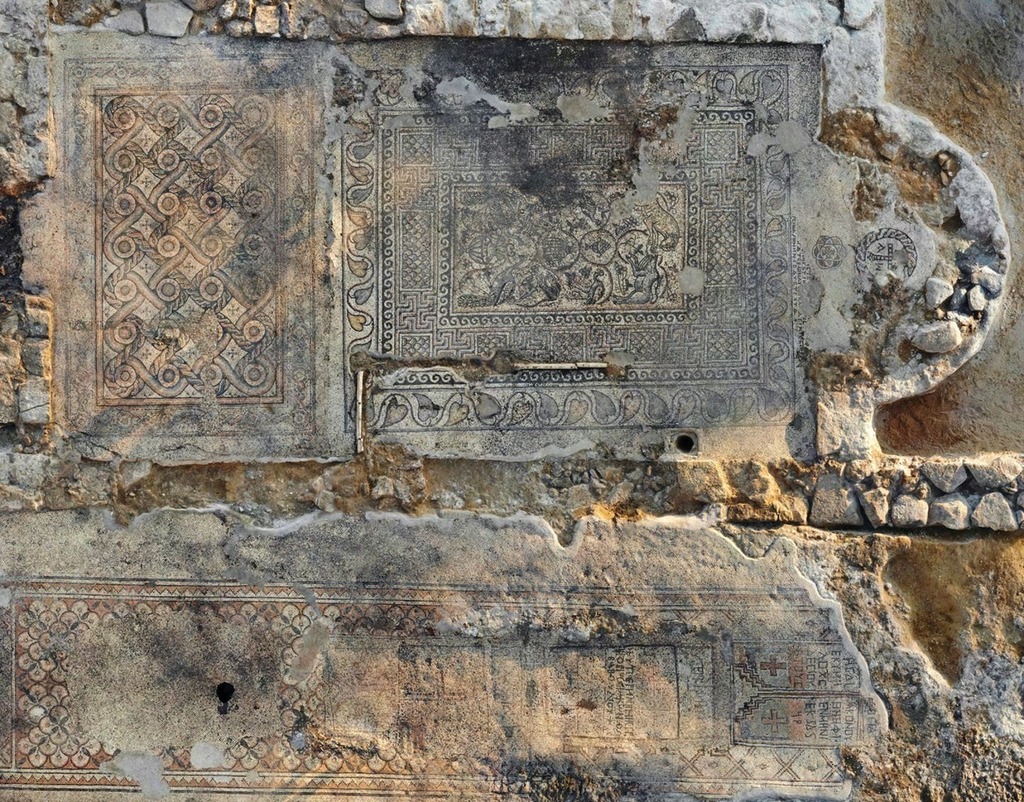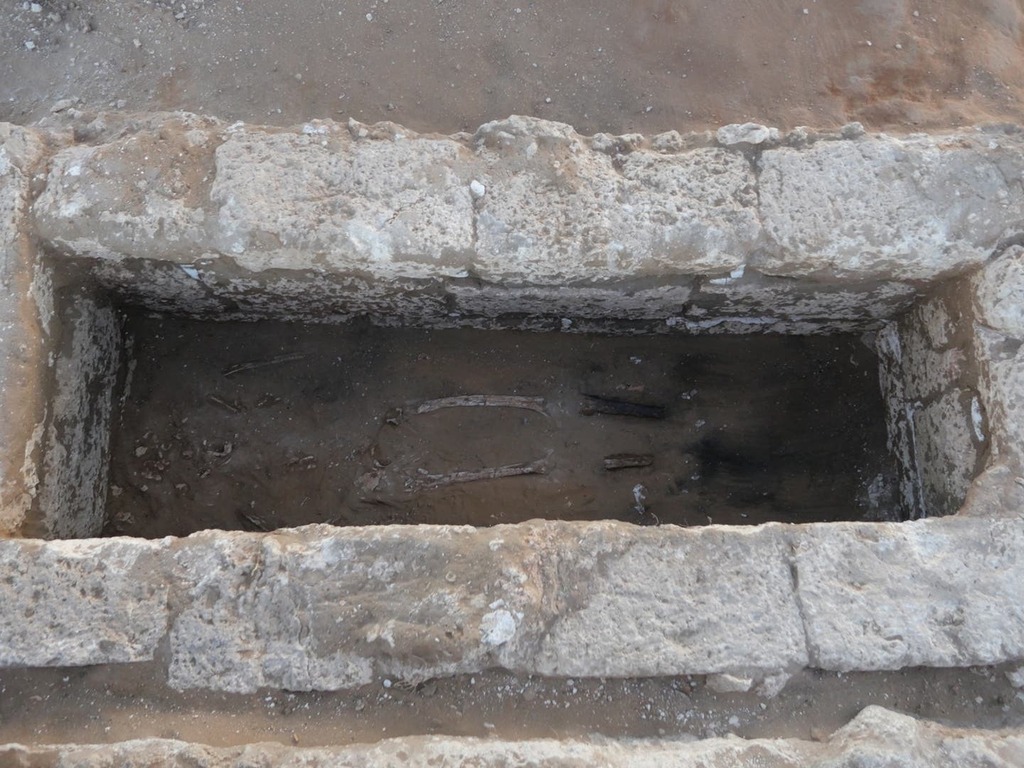An archeological dig in Israel of a 1,600-year-old Byzantine church has revealed the existence of clergywomen with mass graves at the site suggesting a pandemic that crippled the Byzantine Empire, reports Haaretz.
The mosaiced church, built in the fourth or fifth century Common Era (C.E.) near the coastal city of Ashdod, is acclaimed as one of the earliest and largest Christian basilicas found in Israel.
2 View gallery


Aerial view of mosaics in the Byzantine basilica in Ashdod
(Photo: Slava Pirsky and Sergey Alon)
Then, women in the clergy were usually overshadowed by their male counterparts, but some women memorialized in this archeological find include the Holy Mother Sophronia, Theodosia the deaconess, and Gregoria the deaconess.
As archeologists investigated the graves underneath the 1,600-year-old basilica, they also realized that the tombs were used again at a later date.
Researchers uncovered bones belonging to individuals who were unceremoniously placed in the graves sometime in the sixth century.
Such mass graves are typical of large disease outbreaks, Haaretz suggested, as experts hypothesize that they may have found rare evidence of the Plague of Justinian, that swept through the Byzantine Empire in the sixth century C.E. and is believed to have killed up to 5,000 people per day in Constantinople at its peak.
“Besides the unusual amount of funerary inscriptions and the prominent place given to women, we found that this church is like one huge cemetery,” Prof. Alexander Fantalkin said, an archaeologist from Tel Aviv University who leads the dig.
The basilica was first discovered in 2017 and has since been fully excavated.


